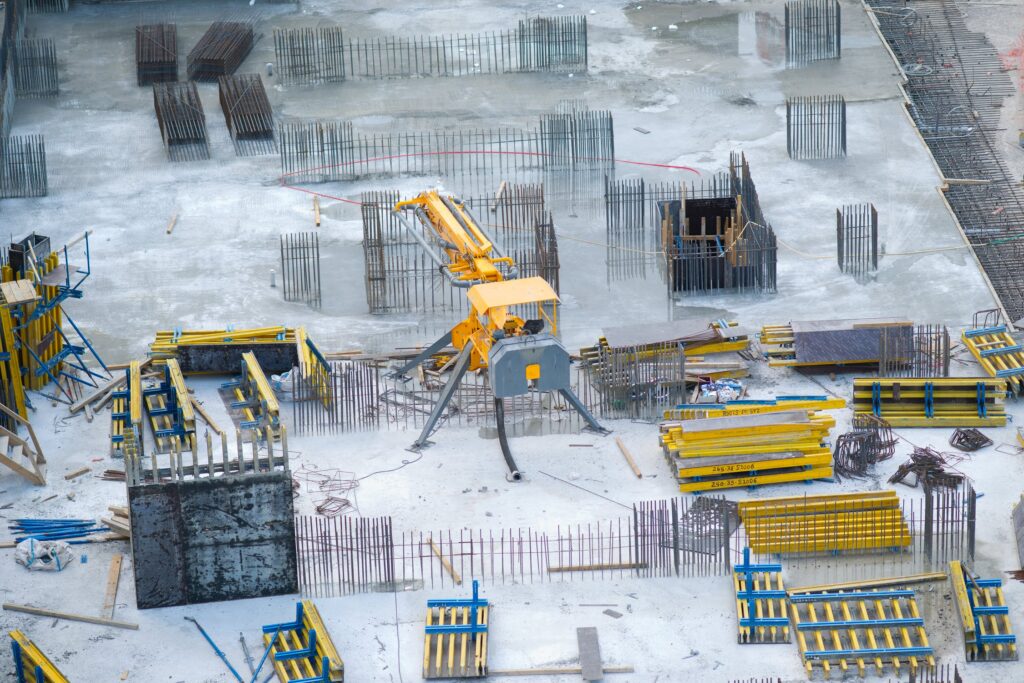By Khalid Noor, 2021
Managing construction projects can be overwhelming. The work of construction project managers is quite stressful due to various factors including constant time pressures and various unknowns in the project which can lead to doubt.
The various aspects of their jobs can be made much easier thankfully due to the advent of construction management softwares that are being produced today. Construction management softwares aims to streamline a lot of the processes involved in construction.
Within construction from inception to completion of a project there are various phases in construction such as estimation and finances, budgeting, accounting, inventory management, quality and safety, workflows and schedules.
A construction management software would include all these various aspects in the software all in one place with the inclusion of cloud file management and document upload as well as chat features and usually tech support. It is important to note, a system such as this would be a project/construction management software that enables various members of the construction team all working on different areas of the project to collaborate on this one platform with communication capabilities and it would allow the project manager to oversee the project with a lot more ease.
This article aims to look at construction scheduling softwares, as scheduling is one aspect of construction. Construction softwares can also focus on one area such as scheduling and provide a more detailed software for that specific aspect or phase of a construction project.
Before we delve into the best construction scheduling software we will briefly touch on the differing types of construction softwares for context into how construction softwares works. An instance of a construction software is an estimation software.

Whereas scheduling is concerned with the time management aspect of a project, estimation looks at the financial aspect of the project, before it’s even begun. As builders submit bids for larger projects, estimating the costs of the project for the consideration of the client is an important part of the process with large companies accepting various bids before deciding on an eventual contractor. On the other hand, when seeking the services of the builder, estimation must be provided either way. An estimation software will help streamline the process of creating an estimation of the expenses expected to be incurred during the project, through pre determined formulas, calculations and line-by-line estimates of materials, labour and other factors involved in the cost of a project.
Another instance to look at is quality and safety. Quality and Safety management softwares aims to help assess, manage and mitigate risk on a construction site. It can provide meaningful data on incidents, their number of occurrences. The data can be represented visually and be interpreted in meaningful ways to help better the construction site.
Essentially they are reporting tools that gather data such as incidents, hazards, individuals related to those incidents, the types of incidents. The aim is to help a project stay on track, to ensure it’s not derailed due to safety concerns as well as ensuring best practices and compliance in the project are followed to ensure litigation problems do not arise.
Like the previous examples, scheduling softwares is the same way, they aim to streamline that process and make it easier for the scheduler and allow them to collaborate with the construction manager. Scheduling is paramount to the success and timely completion of a construction project. Construction projects are complex involving different phases and tasks and can have so many different people working on a construction site or off site, hence the need for scheduling.
A construction schedule is a plan that delineates all the independent and dependent phases of a project that have their own tasks, even something as simple as the gathering of materials for construction. The schedule also identifies the resources and labour that will be a part of the project and how they will be allocated appropriately within the framework of the construction project.
One action once completed will lead to yet another action within a workflow and continues on until the project is completed. Who completes each of these actions and how they will be allocated is also detailed. The start and end times of the respective tasks should be shown as each task or action is going to have a duration that must be estimated and if done correctly resources are allocated in an efficient manner. This is all done with the purpose of keeping a project on track and ensuring it is not derailed by unforeseen or preventable factors.
Projects are becoming increasingly more complex and budgets are decreasing, hence the need for planning and scheduling today more than in the past. If resources are not allocated properly there can be issues due to shortages that pop up in the duration of the project and on its own this can lead to more problems and can derail a project and cause delays.

Delays can be quite expensive and eat into the budget of a project. The labour and the materials need to be both looked at and allocated properly. The different tasks also need to be sequenced properly. Everyday certain pieces of equipment sit unused, money is going down the drain. Owners can incur a significant increase in expenses beyond what was already determined in the budget and scope of the project. As a result there are project schedules to forecast delays that may happen.
There are an array of possible delays that can occur depending on the nature of the project. Examples include weather such as snow that might affect what work can be done. These are factors that are taken into account when constructing a project schedule by averaging the number of days in a period it may snow and removing weekends from the equation and accounting for those days in the project.
So what about the best construction scheduling software? Well the best construction scheduling software will allow all of the above to be done within one platform online where everything is linked and much easier to work with.
Construction schedulers when working on the schedule will either have a written document that is followed step by step or create a visual representation of the schedule with a Gantt chart. Gantt charts provide the benefit of being able to be color coded allowing you to easily link tasks in the project together that are related. The chart consists of horizontal lines that signify how much work has been completed in a duration of time.
To put it simply, a construction scheduling software should enable you to collect information on tasks and prioritize those tasks, then add durations to those tasks and represent them on a gantt chart or any other appropriate visualisation tool. Following materials and other relevant factors accounted for in the segmented tasks, the different construction phases such as ‘laying foundation’ for instance can be grouped with its individual members, which can allow for communication between different groups.
The best construction softwares will not only be the easiest to use but it will have the finest construction scheduling capabilities but will be the foremost in great project management functionality, accurate and efficient estimation tools with accounting and financial functionality, job management, support functionalities and more.
WunderBuild is a construction management software that aims to provide all of these functionalities and more to bring out the best outcomes for a project. It is currently offering a free trial, visit here to try WunderBuild for free.




